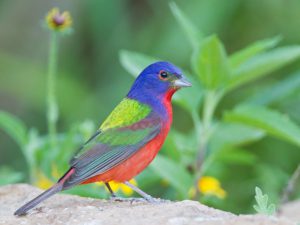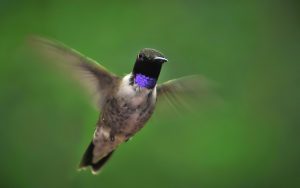San Antonio is where South Texas birds collide with Central Texas species, giving birders a great selection of hotspots with plenty of diversity. There’s a wide selection of good parks to choose from, so how do you pick?
The best places to see birds around San Antonio include the following:
- Mitchell Lake Audubon Center – South of I-10 Loop
- Brackenridge Park – Just North of Downtown
- Crescent Bend Nature Park – Cibolo
- Warbler Woods – Cibolo
- Braunig Lake – Far Southeast along I-37
These five make the list because they strike a good balance of high bird activity, accessibility, and likelihood of seeing birds you don’t see everyday.
Here’s a breakdown of each hotspot to help you choose one, although I’ll tell you upfront – Mitchell Lake the favorite of most birders.
Mitchell Lake Audubon Center
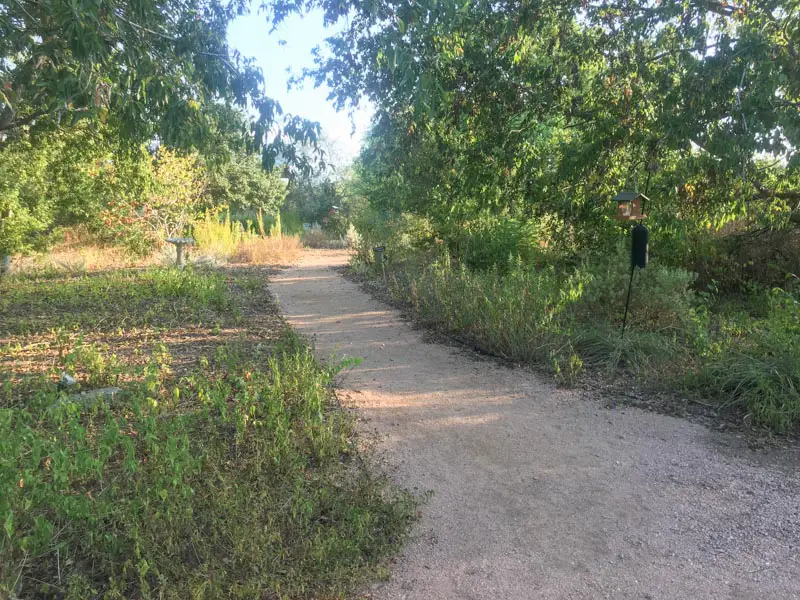
Entrance Cost: $5
Highlight Species:
- Least Grebe
- Cinnamon Teal
- Bonaparte’s Gull
- Green Kingfisher
- Long-billed Thrasher
- Audubon’s Oriole
Between the native plant garden trails at the visitor center, the shrubby woodlands and small ponds, and the lake itself in the back, Mitchell Lake is a birding bonanza!
Possibly one of the best things about this Audubon Center is you can bird so much of it from your car. You’ll always see more on foot, but if you’re looking for a drive-thru birding safari, Mitchell Lake will satisfy you.
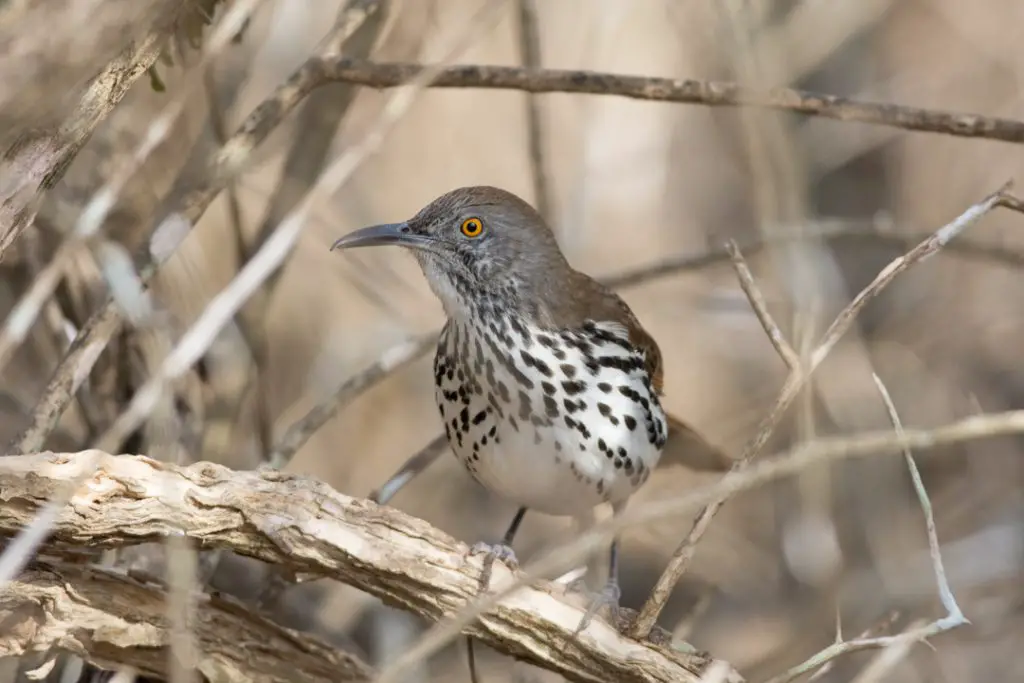
Paved and dirt roads will lead you to the rear of the property with all the holding ponds. Here you’re sure to see herons and egrets, hawks flying overhead, gulls and terns, and ducks by the hundreds during winter months. American White Pelicans are also regulars.

The birds here are easy enough to find for beginner and casual birders, but have enough diversity and rarity potential to attract the most seasoned birders. It has enough action to keep you entertained all morning long!
For a full birding guide with photos, visit our Mitchell Lake page.
Brackenridge Park

Free Entrance
Good for:
- Black-bellied Whistling Duck
- Wood Duck
- Red-shouldered Hawk
- Belted Kingfisher
- Hermit Thrush
- Warblers
Brackenridge Park is located right along the San Antonio River. The abundant flowing water and tall hardwood trees that grow here make it a very scenic and relaxing place to bird, even though it’s close to downtown.
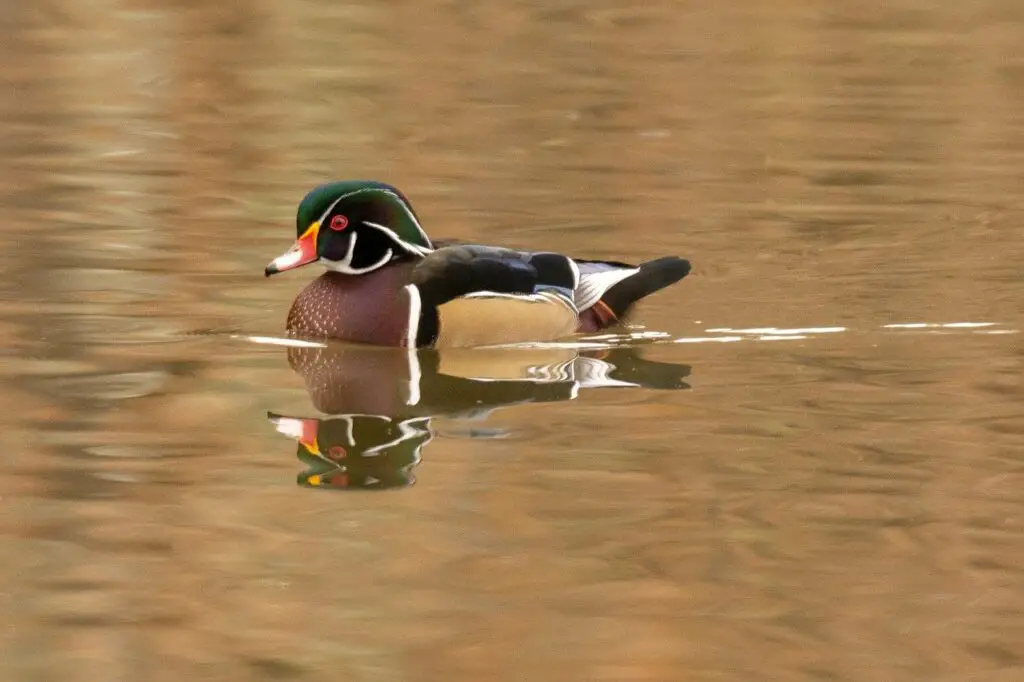
Early mornings usually aren’t busy with other people, especially during the winter. There’s plenty of bird movement and activity to keep you occupied for at least an hour. Most paths are paved for easy walking.
Ducks, herons, and kingfishers are found along the river. Woodland species like woodpeckers, Blue Jays, and warblers are common.
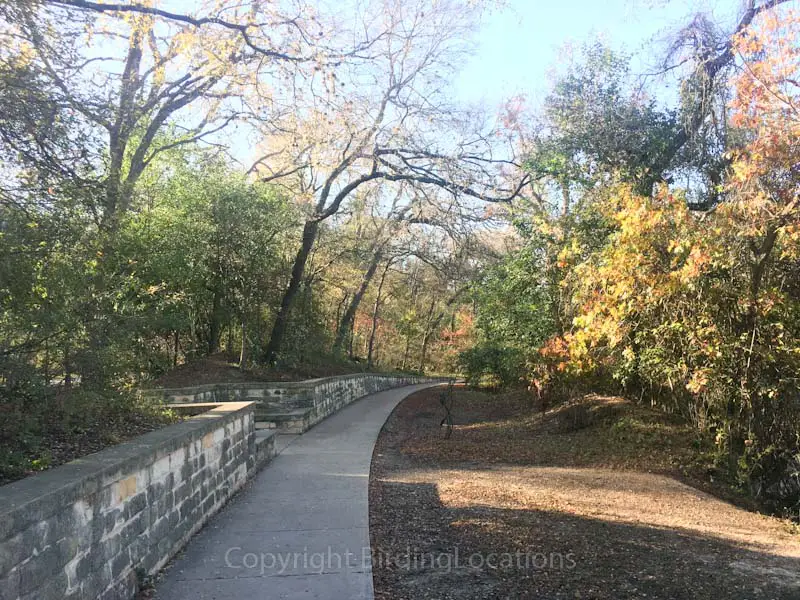
The river tends to funnel migrants through this park, so this is a great place to be during peak spring migration. Late April and early May will bring brightly colored warblers, tanagers, grosbeaks, and vireos, all viewable from a paved sidewalk.
If you’re looking for an easy, relaxing morning stroll by water then Brackenridge is the place for you.
Crescent Bend Park

Free Entrance
Good for:
- Barred Owl
- Crested Caracara
- Yellow-billed Cuckoo
- Woodpeckers
- Great-crested Flycatcher
- Scissor-tailed Flycatcher
- Painted Bunting
- Sparrows
Back in the mid 1990s this park used to be a neighborhood. After a series of floods, the neighborhood was abandoned, the houses removed, and a nature park was established in its place. Today, nature has completely retaken the area except for the old paved streets, which provide excellent walking paths.
This park provides a mix of mature woodland with large hardwoods like pecans and oaks, shrubby grassy areas, and Cibolo Creek which attracts herons, ducks, and kingfishers.

The mix of habitat has attracted an impressive diversity of birds over the years, including lots of migrants and a few rarities.
The most famous rarity here was back in 2012 when someone photographed a Ruddy Ground Dove, normally only found in the tropics and up into Mexico.
April through May and September through October are great times to see migrants here like kites, flycatchers, and warblers.
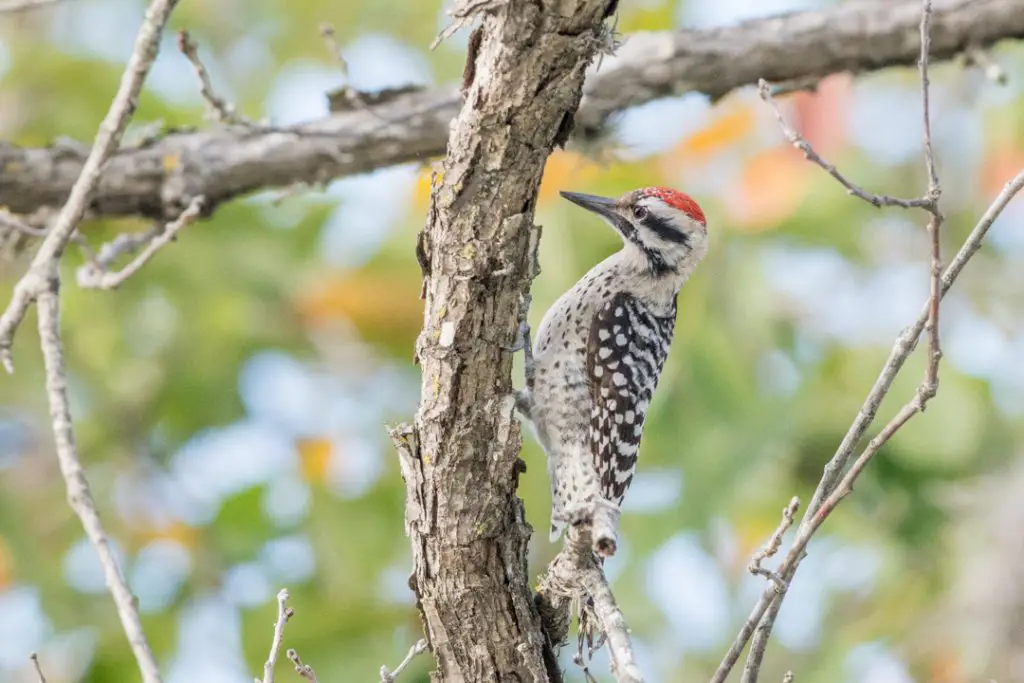
Crescent Bend also features two bird blinds, showing that this park is really catered to birders. The feeders aren’t always kept full, but often enough to keep the birds coming back. Bring your camera if you have one since the blinds sometimes offer great photo opportunities.

This is also a good dog walking park, so bring your furry friends if you have them. The drinking fountain here includes a dog drinking station.
For a full birding guide with photos, visit our Crescent Bend Nature Park page.
Warbler Woods
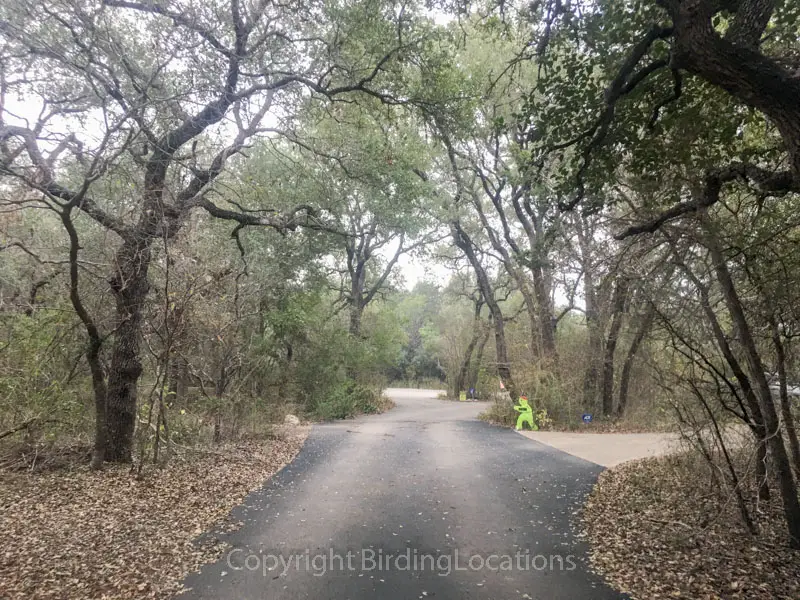
Free Entrance – Must contact landowner ahead of time.
Good for:
- Chuck-will’s-widow
- Hutton’s Vireo
- Golden-crowned Kinglet
- Painted Bunting
- Migrating Warblers
This hotspot is at the far east edge of the San Antonio area, but it’s too good not to include on this list. It’s most famous for spring migrants the last week of April and the first two weeks of May, easily seen from a bird blind near the parking lot. But fall and winter birding here is great too.
Warbler Woods isn’t a park, but actually the private residence of Don and Susan Schaezler. They manage their 124 acres as a bird sanctuary, placing feeders and water stations all over the property and maintaining walking trails.
They welcome the public to visit any time, you just have to fill out a simple contact form at least 24 hours in advance. Just introduce yourself and say what time you’d like to arrive, and they’ll reply with the gate code to get in.
Regardless of which season you go, spending two hours here will reward you with a satisfying and diverse list of birds.

Winter birding here is great for hawks, sparrows, Pine Warbler, and often Golden-crowned Kinglet. Arrive shortly after first light for owls.
Spring and fall are both great for migrants, but the spring warblers are the headliners of this show. Don and Susan have built a flowing, rocky water feature in their backyard that attracts migrants flying through the area.
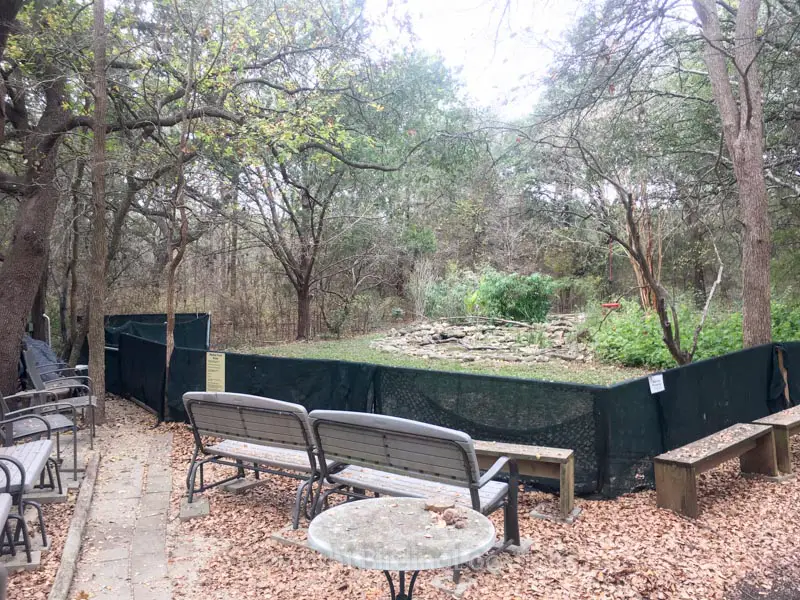
You can sit with your binoculars or camera in one of the dozen or more chairs surrounding the water feature and see the birds up close as they drink and bathe themselves. This may actually be the single best and easiest place to see migrating warblers in Texas that isn’t located on the coast.
For a full birding guide with photos, visit our Warbler Woods page.
Braunig Lake Park
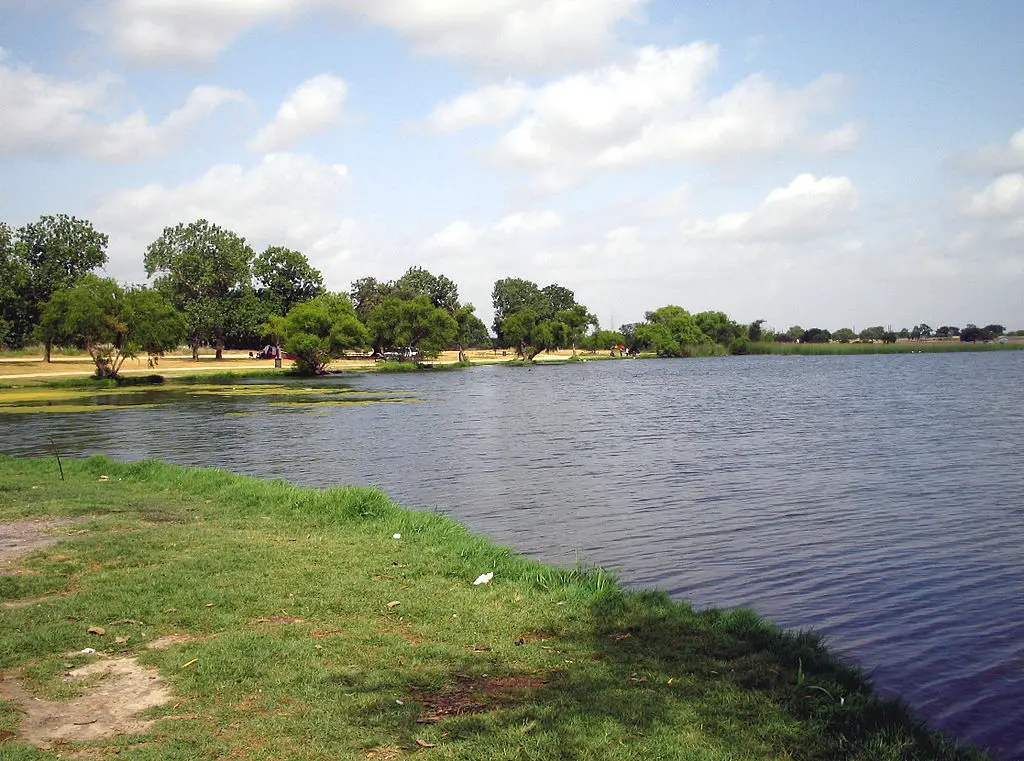
Entrance Fee: $9 per person
Good for:
- Ducks
- Grebes
- Gallinules
- Herons & Egrets
- Gulls
- Terns
- Belted Kingfisher
Braunig Lake is the largest body of water on this list, making it a good choice if you want to see water loving birds. The entrance fee is a bit steep for a quick visit, so I recommend making a full morning out of your visit here to get your money’s worth. Bring snacks and something to drink.
Winter is possibly the best time of year for birding here.
The lake attracts a good variety of ducks and grebes, including Cinnamon Teal, Least Grebe, and Eared Grebe. Sora and sometimes Virginia Rail can be heard from within the reeds. Pelicans and Osprey are regulars. Occasionally uncommon birds will show up like Common Loon, Bald Eagle, and rare gulls.

Fall and spring are a good time to look for migrating shorebirds along the shoreline. Be sure to watch for low and high flyovers, and closely check any gulls for something unusual.
A spotting scope will greatly improve your experience here, so be sure to bring one if you have it.
Need More Options?
Here’s a few other good birding hotspots in San Antonio that didn’t make the top 5, but are still worth a visit if you’re close by.
Medina River Natural Area – Far south side
McAllister Park – Northeast side
Friedrich Wilderness Nature Park – Far Northwest side
South Side Lions Park East – Southeast of Downtown
Bamberger Nature Park – Northwest side



